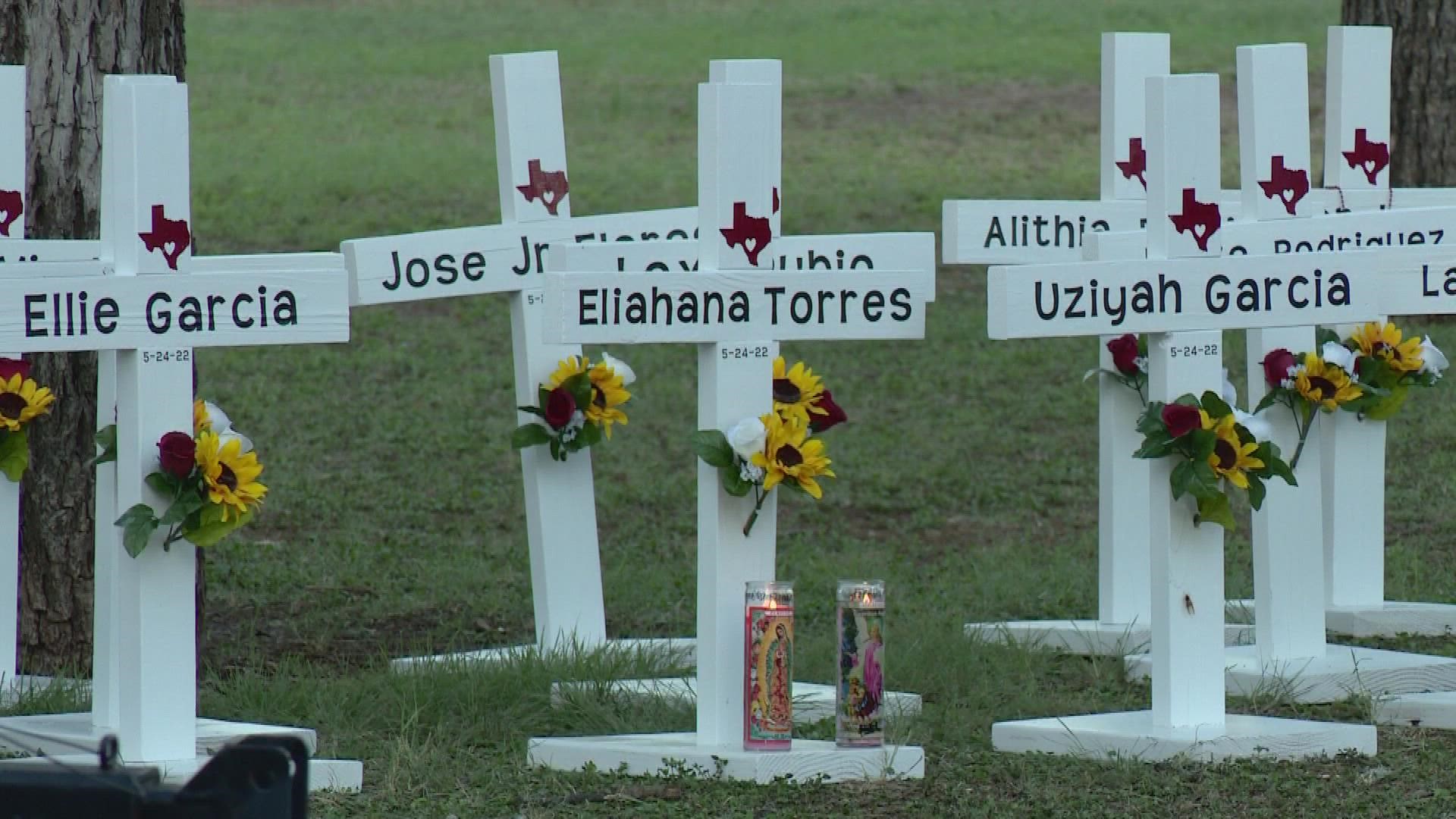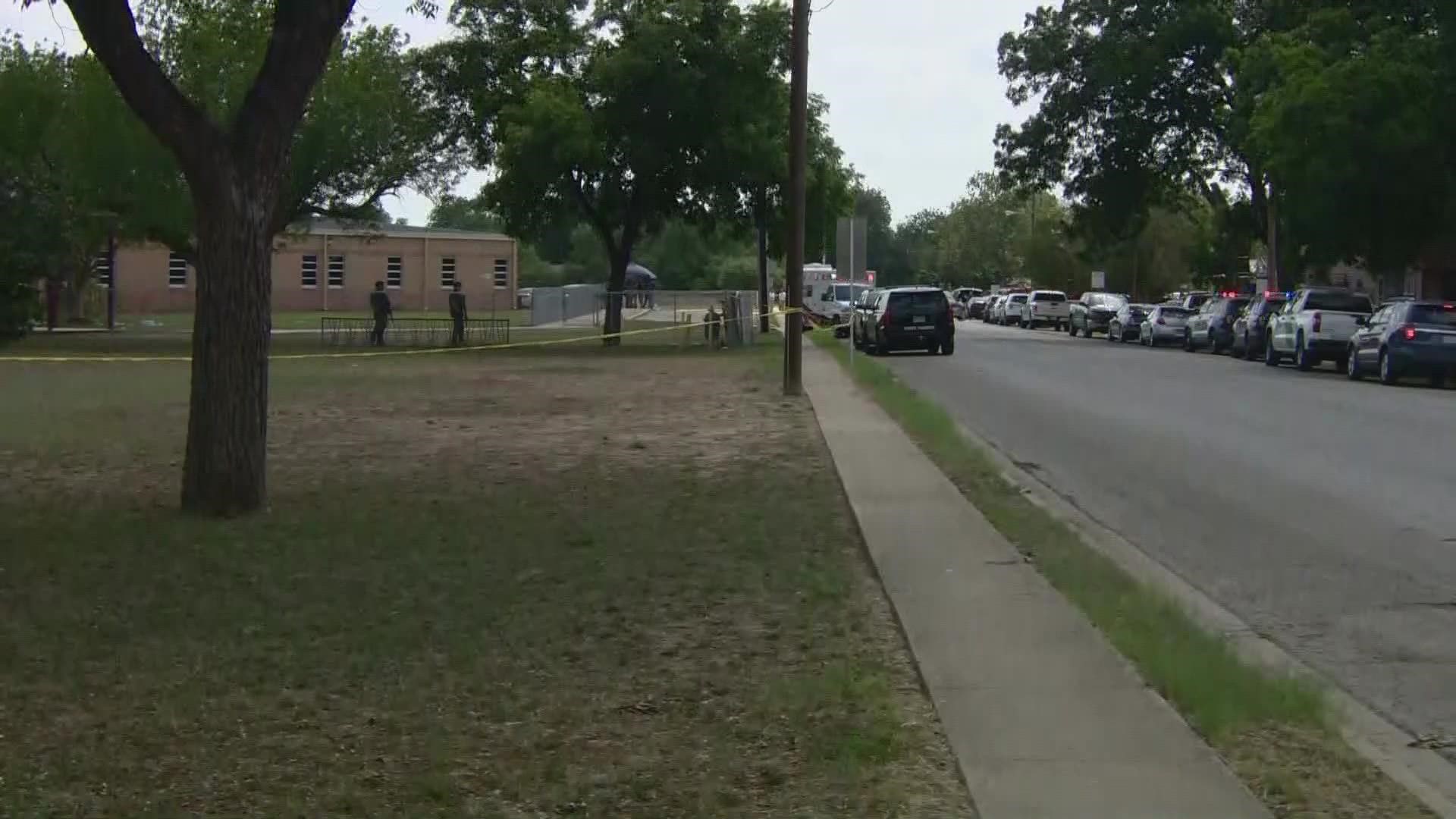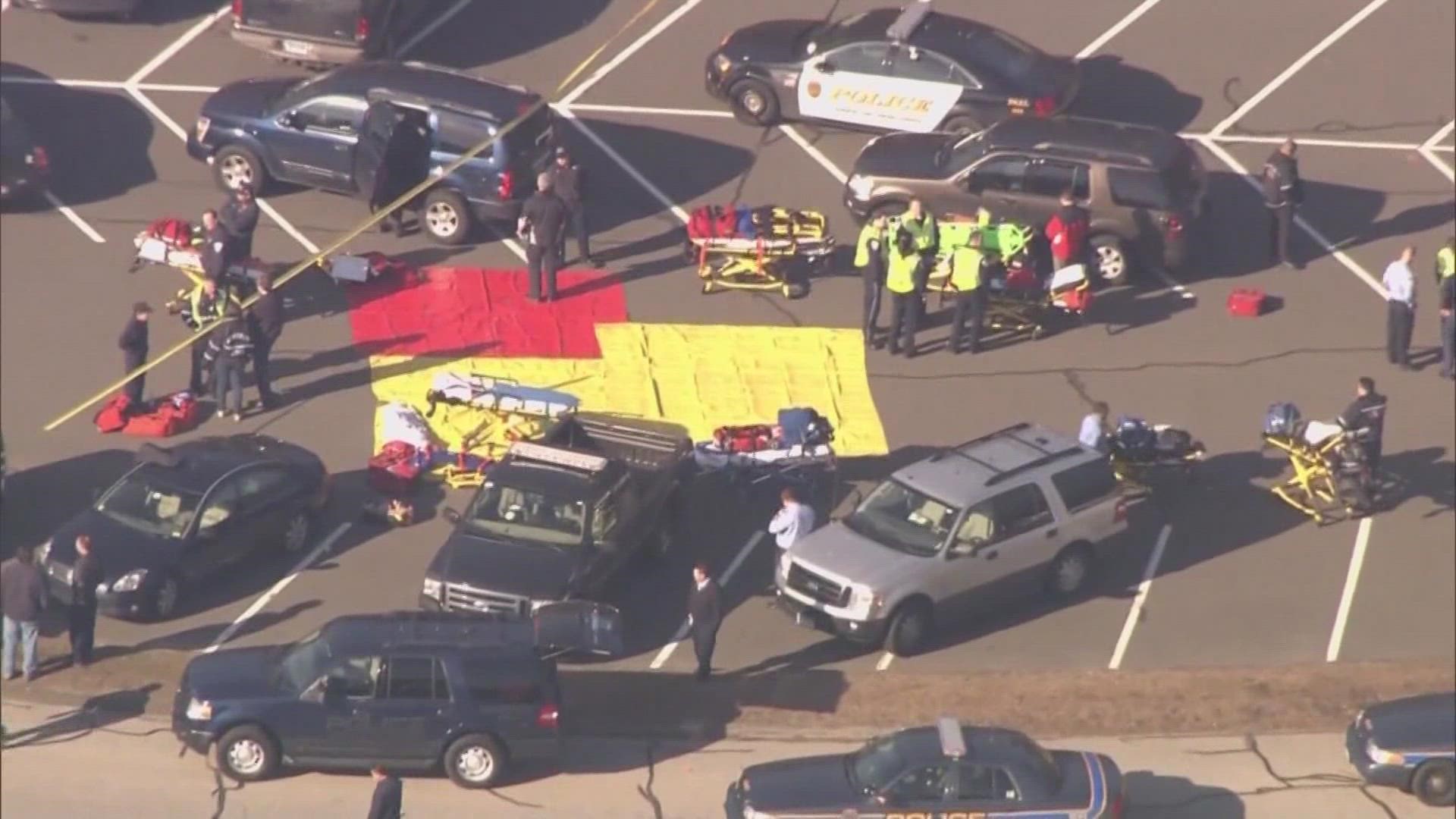'I don't think there could be a harder workspace': Lead investigator from Sandy Hook school shooting shares mass tragedy lessons
Daniel Jewiss' most notable case as a Connecticut State investigator was the Sandy Hook shooting of 2012. He shared lessons from the mass incident with KENS 5.

The mass shooting in Uvalde has drawn comparison to an unthinkable killing spree in Connecticut. Both involve young children, and the two incidents started with a crime against a loved one that ended at an elementary school.
But these shootings happened in different communities, with different lifestyles, with different victims who live in different times.
Nothing prepared Daniel Jewiss for leading the investigation at the Sandy Hook Elementary School. On December 14, 2012, a mass casualty incident was beyond any training, the Connecticut State Police officer said.
Since retiring last year, he has trained law enforcement to respond to active killers.
Jewiss took a break from one of his classes to share the lessons he learned as the lead investigator in a case where 20 children and six adults got killed in Newtown, Connecticut. The suspect committed suicide after his killing spree. Here's his interview with KENS 5 anchor Marvin Hurst:
Chapter 1 Investigation for the people
Daniel: How come you spent a year to do the Sandy Hook investigation to find out what happened if somebody wasn't going to be charged over it? And there's many different reasons about why law enforcement needs to understand what happened. But actually, the most important reason for us and this should be. At the forefront of everything that they're doing is what is best for the victims and the victims' families.
Marvin: Any homicide investigation is already a tough one to deal with. You're talking about mass victims, and you're talking about children. Is that--does that make it even more difficult to carry out?
Daniel: I don't think there could be a harder workspace than where they are now dealing with so many different victims---but dealing with victims of that age. And so they are definitely in a place that they have never been before and a place that it's really hard to get specific training for that. But they have to continue to work their way through it.
Marvin: So Dan, I'm hearing you correctly? Even with all of your years of training and in investigating, nothing--nothing prepares you for a case like this?
Daniel: There's absolutely nothing. As a matter of fact, a lot of the trainings that we do---even though we have seasoned detectives sitting in those trainings, they still do not have the perspective to be able to fully understand it until they're actually in the middle of it. And then I have heard back from some of them that say, now I understand what you were talking about. But the true magnitude of what they're going through, I don't think there's anything else like it in law enforcement that they could understand. That's going to prepare them for that.
Marvin: What is it about that investigation that you're not prepared to see?
Daniel: There's really three main areas there. And it is not to take away from any other events or any other victims of homicide or their families. But these are so different because of. The magnitude of them and the microscope that these families and these first responders are going to automatically be under because the whole world is watching. And because of that, the amount of trauma that can occur afterwards is absolutely magnified, which means our support to those families has got to be at the forefront.
Chapter 2 Investigator's mental health breaks
Marvin: And so is this a fast-moving investigation because you had a lone shooter or do they have to be slow and methodical?
Daniel: This is extremely slow and methodical. The beginning stages, the response to the threat itself and stopping the threat are very fast-paced. And during that, we are very much going to be at risk. But that's one of the lessons that we learned after Columbine was we need to go in and put ourselves at risk. And it sounds like that's exactly what happened there in texas. But once the threat is mitigated, we now go into very much a slow, methodical processing of the scene. And of the evidence, which includes evidence, is also what those people saw. So those eyewitness statements. So there will be hundreds of interviews that they're going to need to do, not only from those individuals on the scene, but background information, people that interacted with the shooter around his life around these last few days.
Marvin: So when I think about the crime scene, then I think about an investigator wearing those white booties and some gloves and walking through that entire facility around the deceased. Making notes...
Daniel: Our team was I would stack them up against anybody else in the country as far as their ability to process and recreate a scene. But some of the challenges that they were met with is the fact that with a scene like this where you've had such an enormous response of first responders with their priority to stop the threat. That means that scene has been contaminated far more than any other scene that they've dealt with because of the amount of traffic that has gone through and should have gone through that. So that alone is just because it's been disturbed so much is a challenge for them. But then, the emotional challenge is also a great obstacle. Whereas normally, they might individually go into some horrific scenes and take photographs or take measurements or collect evidence by themselves or in individual roles. At Sandy Hook, we found that it was better to actually have somebody else paired up with that person that would go into this horrific scene strictly for emotional support, strictly to actually keep eyes on them and make sure that if they needed to tap out and take a break, that they would do that.
Chapter 3 What we know about mass shooters
Marvin: Is there a pressure, Dan, in these investigations for you all to reach immediate conclusions about what happened and why?
Daniel: There actually is, and rightfully so. That's one of the first questions that the world wants to know.
Daniel: And there's going to be some initial information that will probably lead us to some assumptions. But we should be very careful. And I'm sure the investigators will be very careful not to get tunnel vision and make assumptions about why he actually did this. And the truth is, there might be several reasons why somebody did this, but it's going to take them days and weeks to actually get into his full background and look into computer systems and really find out exactly what motivated this person to do something that was so horrific.
Marvin: Is there something that you learned from the tragedy at Sandy Hook that might help investigators here? Like, is there a particular kind of person who does this? Do they act a particular way before it happened? Those kinds of little things that I guess breadcrumbs that connect the dots to this tragedy?
Daniel: Well, the FBI's behavior analysis unit gathers up information from each one of these shooters or these killers, and they still haven't been able to develop one profile that says this is who we're dealing with. They've given us some patterns and some data that it's usually one male. But that person comes from all different backgrounds and all different ages and different races, and they also do their things for a different collection of reasons. And so really, one of the important lessons is just keeping an open mind and letting the data in the facts take you where they need to go.
Chapter 4 Shooting suspect or real name?
Marvin: Should we talk about the suspects because they're key to what happened?
Daniel: The names that we really should focus on are the names of those victims. Very early on, we stop using the suspect's name, even though obviously we needed to continue to talk about the suspect. We have a legal requirement to actually report who the suspect is. You know, because he's been killed. However, we don't necessarily have to mention his name over and over again. People can find out his name if they really need that. But we can talk about the behavior of the suspect in the background of the suspect because that's important for people to be able to relate to, not only so that we can continue to gather more information on him, but so that people can recognize that behavior in their own circles. If I am one of those loved ones listening to reports. And I hear that shooter's name over and over, and I'm not hearing my loved one, whether it's the day after or it's ten years afterwards---I think it just tells me that our priorities need a little bit of shifting.
Marvin: How do mass shootings impact you personally? Was there a personal effect for you?
Daniel: It's the most challenging case emotionally that I ever worked on, but it's also the most rewarding case that I worked on. And I think a lot of that has to do with how you see the world before you go into something like that.
I know at the end of the day that I didn't save any lives at sandy hook, and if I simply had to deal with the stuff that I saw and experienced, that would be extremely hard. And so the fact that I can go around the country and share those lessons learned and talk with people and feel like I'm doing some good to save lives in the future. That to me is extremely therapeutic. And I'm extremely honored to be able to do that.





